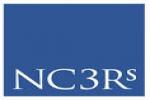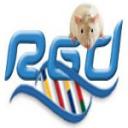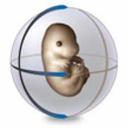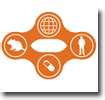The EDA allows scientists to create a visual representation of an animal experiment by laying out its key elements — hypothesis, experimental method and planned analysis — in logically connected, coloured boxes. The software then uses a built-in set of rules to spot potential prob¬lems, and suggests refinements. These may be simple — the researcher hasn’t specified how to randomize animals to the control or treatment arm — or more complex: there are potential confounding variables in
...continue to read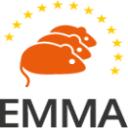
Add to my favorites
Remove from my favorites
collection, archiving and distribution of relevant mutant strains
Category: Laboratory animals
The European Mouse Mutant Archive (EMMA) is a non-profit repository for the collection, archiving (via cryopreservation) and distribution of relevant mutant strains essential for basic biomedical research.The laboratory mouse is the most important mammalian model for studying genetic and multi-factorial diseases in man. Thus the work of EMMA will play a crucial role in exploiting the tremendous potential benefits to human health presented by the current research in mammalian genetics.
...continue to read
Add to my favorites
Remove from my favorites
database resource for the laboratory mouse
Category: Laboratory animals
MGI (Mouse Genome Informatics) is an international database resource for the laboratory mouse, providing integrated genetic, genomic, and biological data for researching human health and disease.
...continue to readThe Allen Mouse Brain Atlas is a comprehensive genome-wide map of the adult mouse brain revealing where each gene is expressed, or “turned on. A combination of RNA in situ hybridization data, detailed Reference Atlases and informatics analysis tools are integrated to provide a searchable digital atlas of gene expression. Together, these resources present a comprehensive online platform for exploration of the brain at the cellular and molecular level.
...continue to readCommercial Company. The Charles River Animal Model Evaluation Program allows you to assess the quality and compatibility of available animal models before making a commitment. Whether you have a new research protocol, are conducting or fine-tuning a pilot study, or simply exploring the opportunity to switch to a new animal model, this program can help you make the right choice.
...continue to read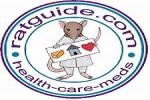
Add to my favorites
Remove from my favorites
Category: Laboratory animals, Laboratory animal tutorials
Although addressed to pet rats, this web site is filled up with behavioural, physiological and health issues that can be of help to researchers working with laboratory rats.
...continue to readThe Rat Genome Database (RGD) is a collaborative effort between leading research institutions involved in rat genetic and genomic research. Its goal is the establishment of a Rat Genome Database, to collect, consolidate, and integrate data generated from ongoing rat genetic and genomic research efforts and make these data widely available to the scientific community. A secondary, but critical goal is to provide curation of mapped positions for quantitative trait loci, known mutations and other p
...continue to read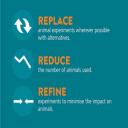
Add to my favorites
Remove from my favorites
Category: Laboratory animals, Laboratory animal tutorials
This site provides an interactive short course on experimental design for research scientists working with laboratory animals. The aim is to reduce the number of animals which are used, improve the quality of the science and save time, money and other scientific resources.
...continue to readThe Mouse Genomes Project aims to use new sequencing technologies to sequence the genomes of 17 key mouse strains. We are releasing the raw sequence data, SNPs, short indels, structural variants and assemblies of each strain.
...continue to readResources provided by EMAP are the EMA Anatomy Atlas of Mouse Development and the EMAGE Gene Expression Database. The EMA Anatomy Atlas of Mouse Development uses embryological mouse models to provide a digital atlas of mouse development. EMAGE is a database of in situ gene expression data in the mouse embryo and an accompanying suite of tools to search and analyse the data.
...continue to read
Add to my favorites
Remove from my favorites
National Toxicology Program
Category: Laboratory animals, Laboratory animal tutorials
This website from the US National Toxicology Program presents microscopic images of rodent organs and non-neoplastic lesions. The atlas is organized by organ system and is subdivided into chapters, each covering a single organ. Each chapter comprises a set of sections, each describing a single lesion. Each section includes histopathologic descriptions, high-quality images, diagnostic guideline recommendations, and references (Environmental Health Perspectives 122:A76, March 2014).
...continue to read
Add to my favorites
Remove from my favorites
International Knockout Mouse Consortium
Category: Laboratory animals
The International Knockout Mouse Consortium (IKMC) is a scientific endeavour to produce a collection of mouse lines, each lacking a protein-coding gene, using a combination of gene trapping and gene targeting in C57BL/6 mouse embryonic stem (ES) cells.(M Ringwald, Nucleic Acid Res 39, D849, 2011).
...continue to readThe IMPC envisages a ten year programme to undertake a broad-based, systematic genome-wide phenotyping project of knockout mice generated from the embryonic stem cell mutant resources developed by the International Knock-out Mouse Consortium (IKMC). It will produce knockout animals for each gene and analyze the phenotypic changes.
...continue to readThe commercial company Jackson Laboratory JAX® Mice contains the most published and well characterized mouse models in the world.
...continue to readThe Diversity Outbred (DO) stock from JAX is a genetically diverse mouse resource and may be used as a tool for high resolution genetic mapping and validation of previously identified quantitative trait loci (QTLs) linked to disease susceptibility, drug resistance or behavioral phenotypes. It represents 45 million single nucleotide polymorphisms (SNPs) and 4 million copy number variations.
...continue to read
Add to my favorites
Remove from my favorites
Category: Laboratory animals, Laboratory animal tutorials
The mission statement of the 3Rs-Centre is to stimulate the development, acceptance and implementation of methods which can Replace, Reduce and Refine (the 3Rs) animal experiments.The 3Rs-Centre stimulates the development, acceptance and implementation of 3Rs methods (Replacement, Reduction and Refinement of animal experiments), by advising and giving information to researchers.
...continue to readPage: 1

